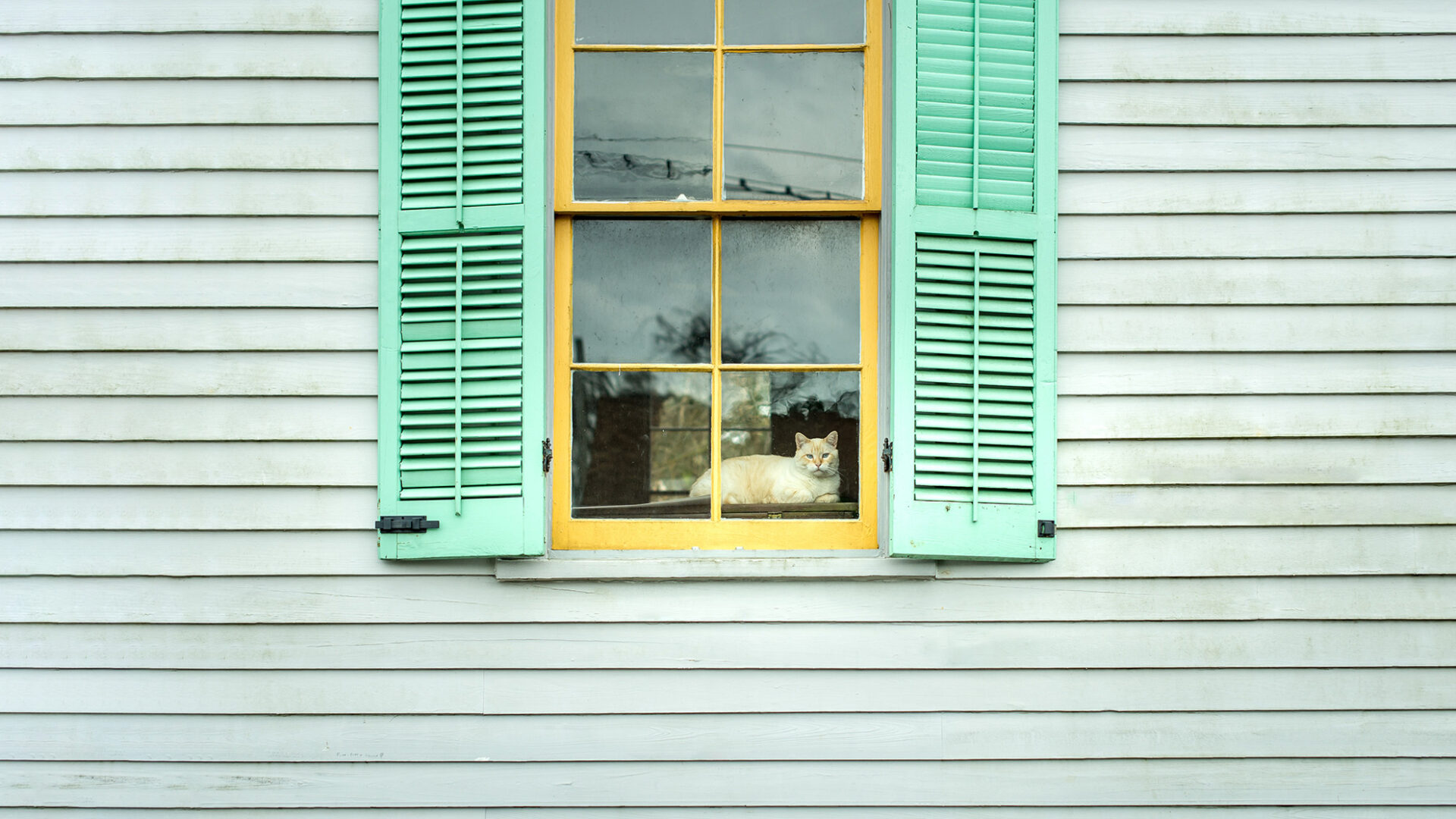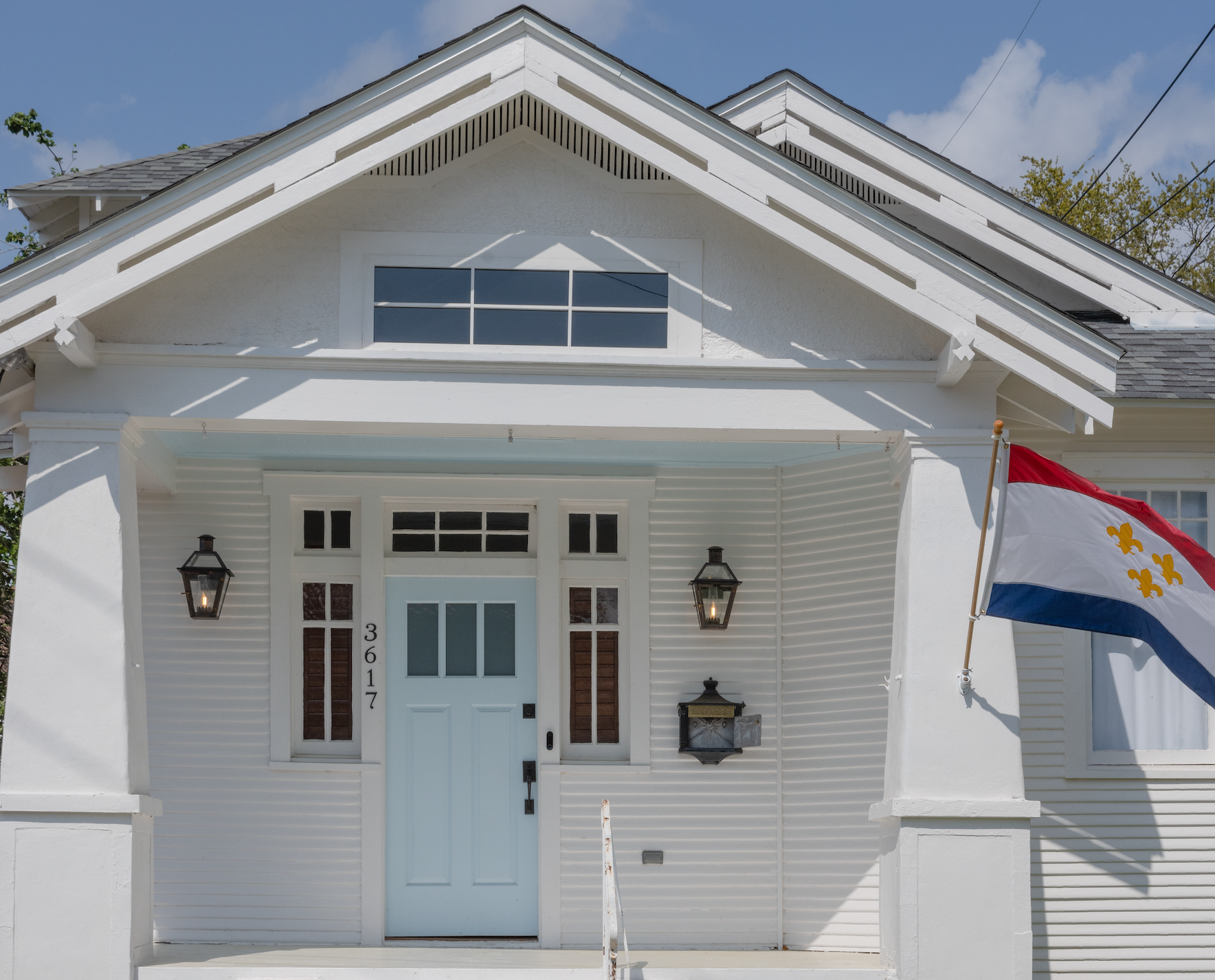Wooden windows and doors: Repair, don’t replace
Despite what you might have heard, the original wooden windows on older houses can be energy efficient, work beautifully and remain a charming, historic architectural feature of a home.
Historic wooden windows can last for centuries if regularly maintained. Individual parts can be repaired and replaced, and restoring existing wood windows keeps these still-viable building materials out of a landfill. They also have an energy-saving advantage: operable wooden sash windows can be opened during mild weather, giving the HVAC (and your energy bill) a break. Before modern-day heating and cooling systems, historic buildings were designed to work with the climate, and windows played an integral part in passive heating and cooling.
Tips for keeping your wooden windows in great shape
- If a home’s original double-hung windows no longer open, first look to remove built-up layers of paint along the jambs.
- If the window sash won’t stay open on its own, make sure the sash cord is intact and evaluate the weight-and-pulley systems hidden inside the frame. The weight-and-pulley system can be repaired if it is broken or missing weights.
- To fix drafty windows, first check for deteriorated components. Broken panes of glass, missing or deteriorated glazing putty — the material that holds glass panes into the wooden sash — and rotted wood are common culprits to address first. “Replacement of an entire wood window because of a deteriorated component, typically the sill or the bottom rail, is rarely necessary,” explains the New Orleans Historic District Landmarks Commission’s Guidelines for Windows and Doors. Deteriorated wood windows often can be brought back to good condition with “selective repair or replacement of damaged parts and the implementation of a regular maintenance program,” the guidelines say. If the deterioration goes beyond homeowners’ DIY prowess, they can turn to one of the city’s many wood window experts to repair and replace components.
- Weather stripping and caulking are cost-effective ways to weatherize windows and reduce air infiltration, according to the National Park Service’s Illustrated Guidelines on Sustainability for Rehabilitating Historic Buildings. The New Orleans HDLC recommends installing weather stripping on the interior of a window between sashes, around sash perimeters and behind sash tracks. When applied to moving window parts, weather stripping can become loose or damaged, so regular maintenance checks can ensure that windows remain airtight.
- On the exterior, the New Orleans HDLC recommends using caulk to close perimeter joints along the window frame exterior “where two dissimilar materials meet; where expansion and contraction occur; or where materials are joined together,” the Guidelines for Windows and Doors say.
Water Intrusion
Windows are typically some of the first points of water intrusion. Here are a few things to note about your openings:
- Windowsills and door thresholds should be sloped toward the exterior, allowing water to run away from the building.
- Window sills and drip caps should have a “kerf cut” on the underside. A kerf cut is a thin cut the width of a saw blade that inhibits water from traveling toward the window opening.
- Properly placed window stops and hardware keep the sashes snug in their track while also allowing them to operate. Maintaining the operability of the window can aid in its lifespan and will allow for better quality inspection.
- The glazing putty should be maintained. Properly installed glazing putty creates a seal around the panes of glass and can last for decades.
- All exterior window parts, including the glazing putty, should be painted. To help the longevity of the paint job and to help combat mold growth, consider using an oil-based primer and adding zinc oxide powder to the glazing putty. Make sure to use proper safety precautions.
“We always remind our customers that paint acts as the first line of defense when it comes to protecting their windows,” said Brooke Cranford, sales director at New Orleans-based Inhab Millworks, “which is why it is imperative to be proactive with paint maintenance.” When undertaking any window repairs, the National Park Service’s Preservation Brief 9 recommends stripping paint that is flaking or peeling or excess layers of built-up paint, in order to properly examine the condition of the window before beginning your project.






